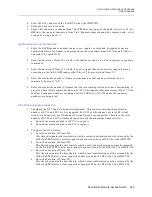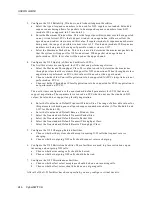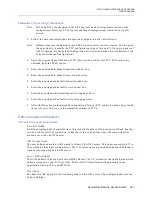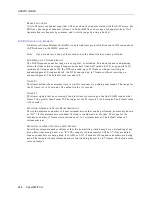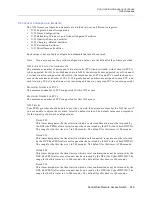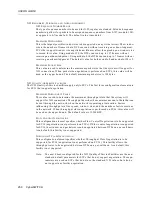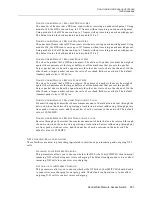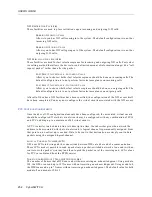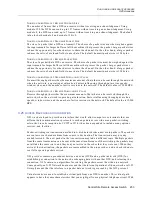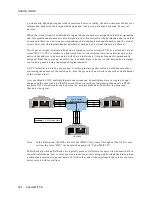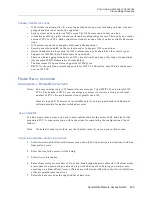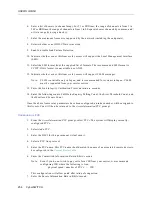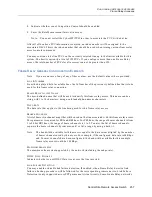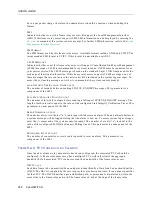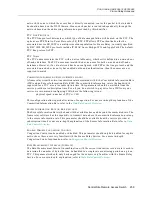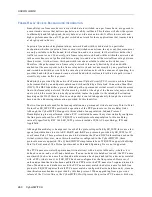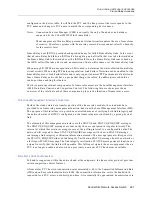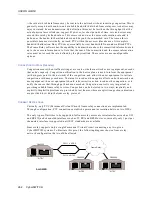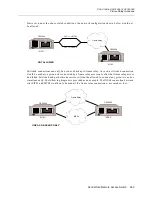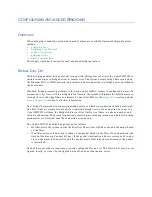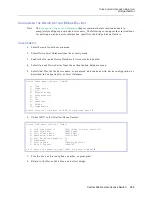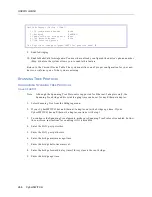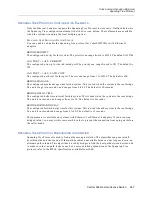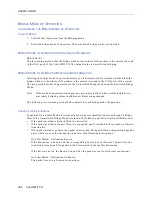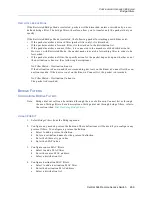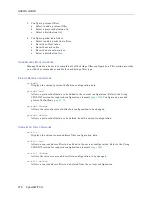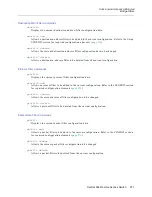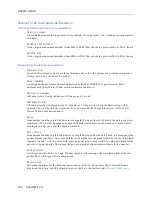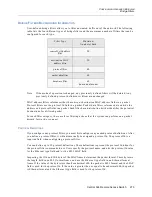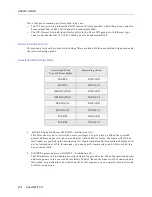
Central Site Remote Access Switch 259
C
ONFIGURING
A
LTERNATE
A
CCESSES
Frame Relay Accesses
network, the one to which the access line is directly connected, routes the packet to the intended
destination based on the DLCI therein. Hence, each packet is routed independently through the
network based on the addressing information provided by this identifier.
PVC L
INE
P
ROTOCOL
The PVC line protocol determines which type of data encapsulation will be used on the PVC. The
options are PPP Point to Point Protocol or FR_IETF. PPP allows PPP authentication for the
associated device. FR_IETF is a multiprotocol encapsulation for Frame Relay, currently specified
by RFC 1490. FR_IETF protocols include IP, MAC Layer Bridge, IPX, and AppleTalk. The default
PVC line protocol is PPP.
PVC N
AME
The PVC name associates the PVC with a device table entry, whether it is defined in an on-node or
off-node database. The PVC name must match the device name for both on-node and off-node
databases. However, if a virtual circuit has been configured with PPP as the line protocol, and the
associated on-node device entry has enabled outbound authentication, then the names are not
required to match.
C
OMMITTED
I
NFORMATION
R
ATE
(
IN
K
BITS
/
SECOND
)
A frame relay circuit has two transmission rates associated with it: the Committed Information Rate
(CIR) and an Excess Information Rate (EIR). The committed information rate is the bandwidth
requested for a PVC at service subscription time. This parameter should be available from the
service provider at subscription time. Even if you do not wish to pay extra for a CIR from your
carrier, we recommend configuring CIR where the following is true:
physical speed/number of PVCs = CIR
This configuration allows quick alleviation of congestion. For a more in-depth explanation of the
Committed Information Rate, refer to the
Data Rate Control Overview
.
E
XCESS
I
NFORMATION
R
ATE
(
IN
K
BITS
/
SECOND
)
The Excess Information Rate is the bandwidth available above and beyond the committed rate. The
frame relay software has the capability to transmit data above the committed information rate up
to the excess information rate. This parameter should be available from the service provider at
subscription time. For a more in-depth explanation of the Excess Information Rate, refer to
Data
Rate Control Overview
.
E
NABLE
/D
ISABLE
C
ONGESTION
C
ONTROL
Congestion Control can be enabled or disabled. This parameter should only be disabled for captive
networks or those users very familiar with the Frame Relay Service. For a more in-depth
Congestion Control explanation, refer to
Congestion Control Overview.
R
ATE
M
EASUREMENT
I
NTERVAL
(I
N
M
SECS
)
The Rate Measurement Interval in combination with the current transmit or receive rate is used to
determine the number of bytes that can be handled in a single rate monitoring period on a given
PVC. This parameter should only be changed for those users very familiar with the Frame Relay
Service. For a more in-depth explanation, refer to
Data Rate Control Overview
.

